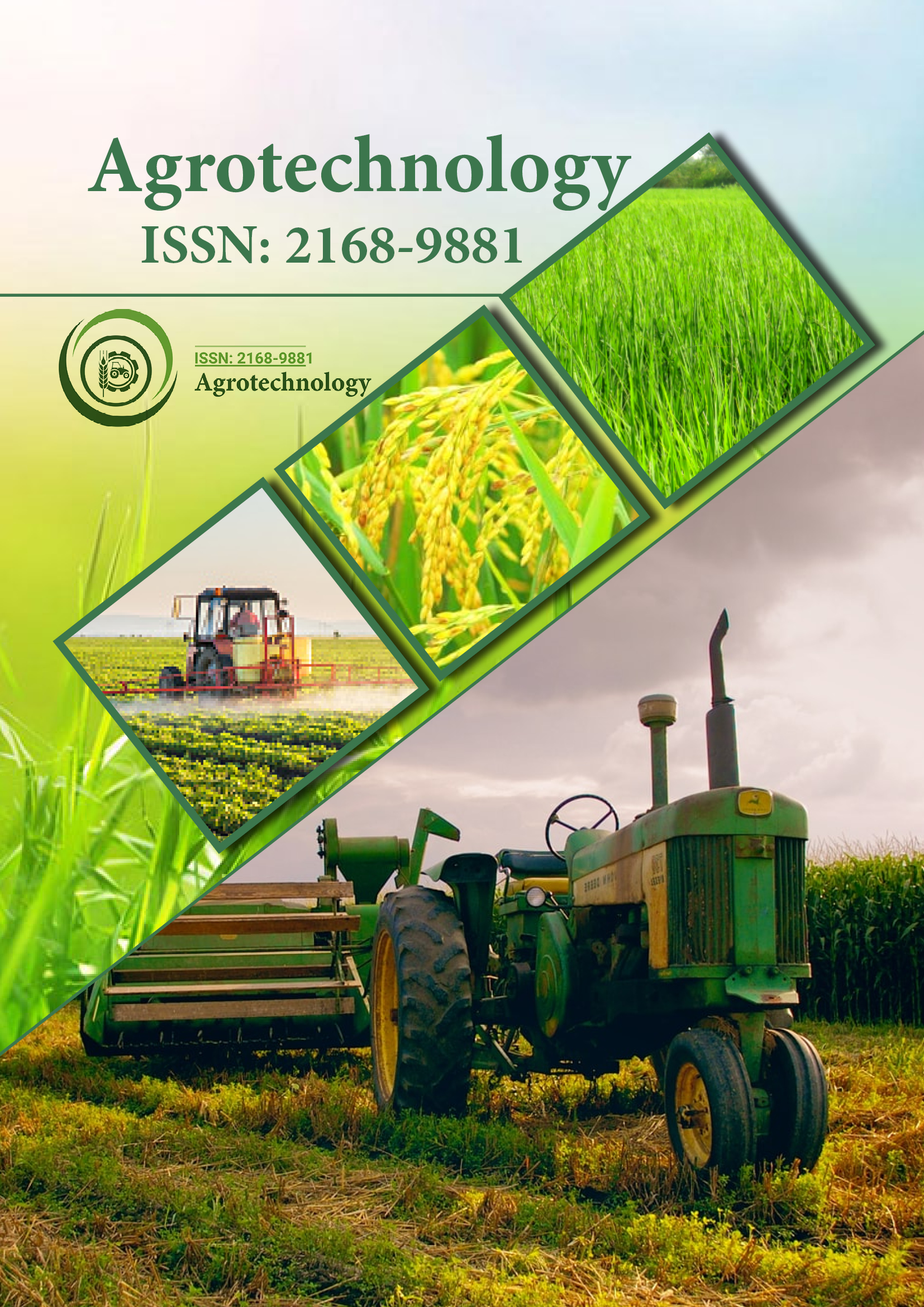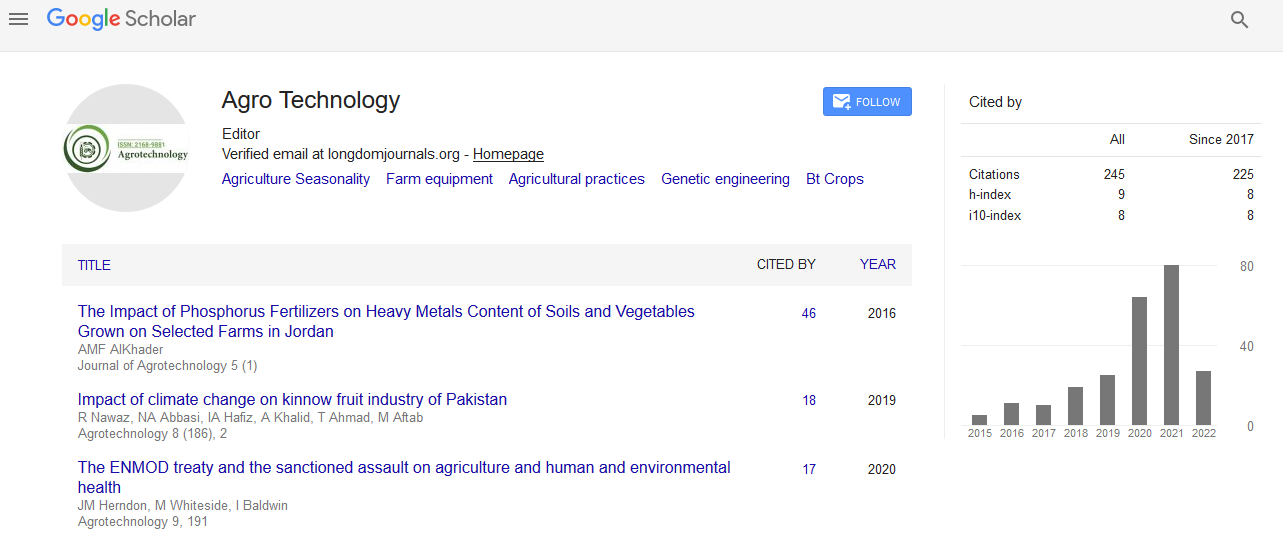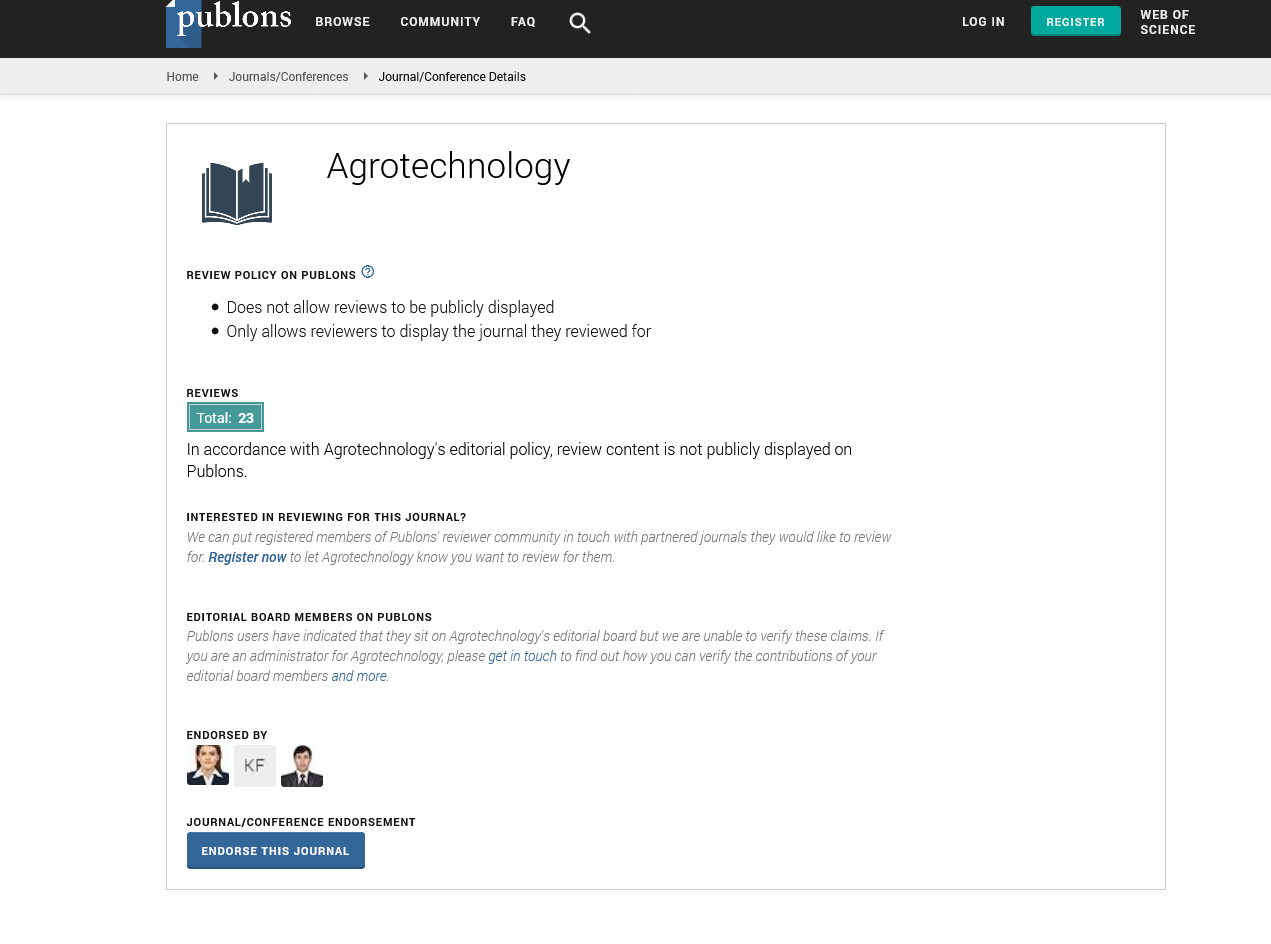Indexed In
- Open J Gate
- Genamics JournalSeek
- Academic Keys
- ResearchBible
- Cosmos IF
- Access to Global Online Research in Agriculture (AGORA)
- Electronic Journals Library
- RefSeek
- Directory of Research Journal Indexing (DRJI)
- Hamdard University
- EBSCO A-Z
- OCLC- WorldCat
- Scholarsteer
- SWB online catalog
- Virtual Library of Biology (vifabio)
- Publons
- Geneva Foundation for Medical Education and Research
- Euro Pub
- Google Scholar
Useful Links
Share This Page
Journal Flyer

Open Access Journals
- Agri and Aquaculture
- Biochemistry
- Bioinformatics & Systems Biology
- Business & Management
- Chemistry
- Clinical Sciences
- Engineering
- Food & Nutrition
- General Science
- Genetics & Molecular Biology
- Immunology & Microbiology
- Medical Sciences
- Neuroscience & Psychology
- Nursing & Health Care
- Pharmaceutical Sciences
Perspective - (2024) Volume 13, Issue 4
Agroecology: A Complete Approach to Sustainable Food Production Systems
Mark Anthony*Received: 29-Nov-2024, Manuscript No. AGT-24-27396; Editor assigned: 02-Dec-2024, Pre QC No. AGT-24-27396 (PQ); Reviewed: 16-Dec-2024, QC No. AGT-24-27396; Revised: 23-Dec-2024, Manuscript No. AGT-24-27396 (R); Published: 30-Dec-2024, DOI: 10.35248/2168-9891.24.13.387
Description
Agroecology is a complete approach to sustainable food production that requires matching agricultural processes with environmental standards. This model takes into consideration environmental, social and economic issues, resulting in a balanced ecosystem in which agriculture preserves natural processes and enhances biodiversity. Despite conventional farming systems, which frequently choose quick returns, agroecology takes a long-term approach, focusing on the development of sustainable food systems that enhance the soil, protect biodiversity and enhance socioeconomic stability.
Agroecology is essentially about increasing diversity in crop and animal production, adopting mixed agricultural systems that reflect the complexity found in natural ecosystems. Farmers that cultivate a range of crops and animals together use fewer chemicals because various plant species and animal interactions naturally support insect management and soil fertility. Polyculture, or the growing of numerous crops, reduces the chance of massive crop loss and improves food safety. Intercropping, for example, increases nutrient availability in soil, reduces resource competition and improves pest resistant.
Agroecology is primarily involved with soil health. Soil is more than just a medium for plant roots; it is a living ecosystem rich in microorganisms that play significant roles in nutrient cycling and plant health. Crop rotation, cover cropping and less cultivation are agroecological methods that help to conserve soil structure, retain moisture and enhance organic matter. These methods promote a healthy soil environment in which advantageous microbes improve, hence requiring plant development and resistance. Agroecology improves soil fertility while reducing pollution problems by eliminating artificial fertilisers and focusing natural composting and the recycling of nutrients.
Agroecology also supports for a decreased dependence on synthetic chemicals, choosing natural pest management approaches instead. Techniques such as biological control, where beneficial insects or natural predators manage pest populations, replace chemical pesticides. This method not only protects soil and water supplies from contamination, but it facilitates healthy biodiversity on and around farms. Planting growing species that attract pollinators and beneficial insects helps to manage pest populations naturally. This strategy decreases farming's environmental effect while also protecting pollinator populations that are necessary for food production.
Water management is another essential element of agroecology. Farmers may improve water efficiency, minimize waste and reduce soil erosion by using practices like rainwater collecting drip irrigation and mulching. Mulching, for example, conserves soil moisture while reducing weeds, decreasing the need for pesticides. In dry places, agroecological approaches assist ensure that water resources are utilized wisely, enhancing agricultural productivity without reducing natural reserves.
Agroecology depends heavily on community engagement and information exchange. This strategy values local expertise and defines agricultural techniques to the specific natural circumstances of each location. Agroecology emphasizes interaction among farmers, scientists and local people, creating a team approach to finding solutions and advancement. The modification of farming practices to local circumstances minimizes dependence on external resources like imported seeds or fertilisers, making food production more self-sufficient and stable. Agroecology enhances rural economies and helps to conserve traditional agricultural knowledge that has enabled communities for centuries.
Agroecology relies significantly on community interaction and knowledge sharing. This strategy emphasizes local expertise and customizes agricultural techniques to the specific natural conditions of each location. Agroecology promotes interaction between farmers, scientists and locals, resulting in an integrative approach to problem solving and advancement. The adaptation of agricultural activities to local conditions reduces dependence on external resources such as imported seeds and fertilisers, making food production more self-sufficient and stable. Agroecology benefits rural economies and helps to preserve traditional agricultural knowledge that has served communities for generations.
In conclusion, agroecology provides an extensive approach to food production that goes over maximizing yields. Agroecology stimulates biodiversity, values soil health, encourages natural pest management, manages water resources efficiently and involves local communities to generate a sustainable food supply. This method values the natural environment, promotes equitable society and improves local economies. As global agriculture faces new challenges, agroecology provides a balanced strategy that connects agricultural practices with the health of both people and the environment. Sustainable food systems are not only possible, but also can develop in harmony with nature due to agroecology.
Citation: Anthony M (2024). Agroecology: A Complete Approach to Sustainable Food Production Systems. Agrotechnology. 13:387.
Copyright: © 2024 Anthony M. This is an open access article distributed under the terms of the Creative Commons Attribution License, which permits unrestricted use, distribution, and reproduction in any medium, provided the original author and source are credited.


